Pictures From an Arctic Expedition Cruise to Greenland

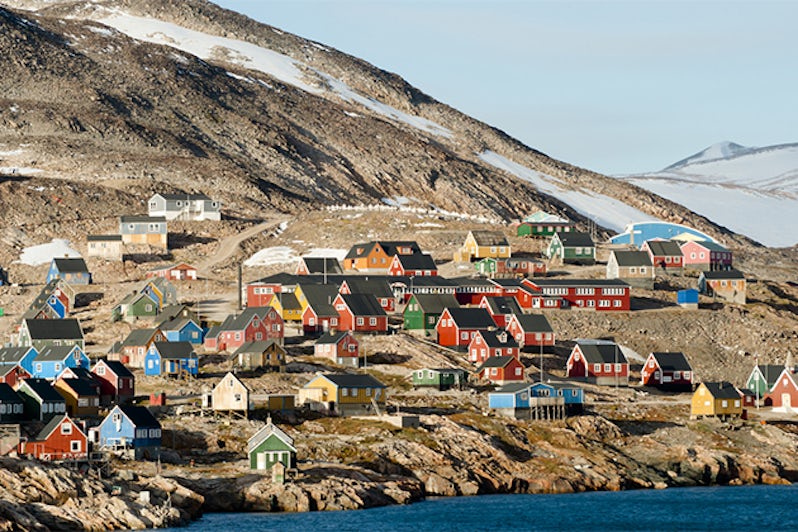
It may be the largest island in the world, but Greenland isn't on most cruisers' radar -- and that's one prime reason to go. A cruise here will make you feel like you're truly at the end of the earth. By day, you'll visit remote small towns with brightly colored wooden houses, where hunting and fishing are a way of life and sled dogs may outnumber the local residents. In the evenings, you'll sail through a seemingly endless sea of icebergs, glowing blue and white under the midnight sun.
Although Holland America includes a few Greenland ports on some of its lengthier transatlantic sailings, the region is mostly the domain of expedition and luxury lines. Hurtigruten, Lindblad Expeditions, Silversea and Quark Expeditions are among the companies that offer intensive Greenland itineraries, usually combined with ports in nearby Iceland. Some sailings may also feature stops in Norway's Svalbard islands or northeastern Canada.
Whichever cruise you choose, prepare to be flexible. The weather this far north can be variable, and ice conditions or fog may occasionally necessitate route changes or missed ports. During our own recent voyage -- a 12-night "Glaciers and Ice" itinerary from Reykjavik, Iceland to Kangerlussuaq, Greenland aboard Hurtigruten's 256-passenger Fram -- the June weather wreaked havoc on the first half of our itinerary. But it also brought us warm sunshine and calm seas above the Arctic Circle, which made for a few days in port that we'll never forget.
Read on to see more of what a cruise to Greenland is like.
--By Sarah Schlichter, Senior Editor of IndependentTraveler.com
On This Page
Embarkation in Reykjavik
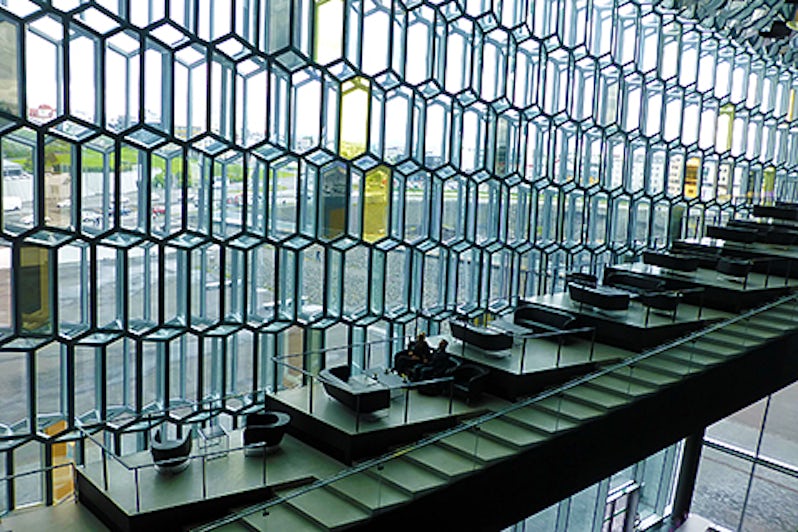
Although the capital city of Reykjavik is home to about two-thirds of Iceland's total population, it feels more like a mid-size town than a metropolis. There are few tall buildings, the downtown core is compact and easily walkable, and residential side streets are lined with cheerful flower beds and green lawns. Most visitors from the U.S. arrive here early in the morning after a red-eye flight, but Fram's embarkation doesn't start until late afternoon. You may want to arrive a day early or pay for a day room at a hotel where you can leave your bags and take a nap. Alternatively, there are lockers to store your bags at the main bus terminal (they require a chip-and-PIN credit card, relatively uncommon to U.S. banks), or you can call ahead to see if the ship will hold your bags.
Highlight: Scandinavians are famous for cutting-edge design, and the best place to see it in Reykjavik is Harpa, a concert hall and conference center that opened on the waterfront in May 2011. Designed by Olafur Eliasson to resemble the basalt columns seen throughout Iceland, the building's exterior glitters with thousands of pieces of hexagonal-shaped glass. It looks even cooler from the inside, where visitors can wander from one level to the next and watch the angles and perspectives change. Don't forget to look up -- there are mirrors on the ceiling!
Grundarfjordur, Iceland
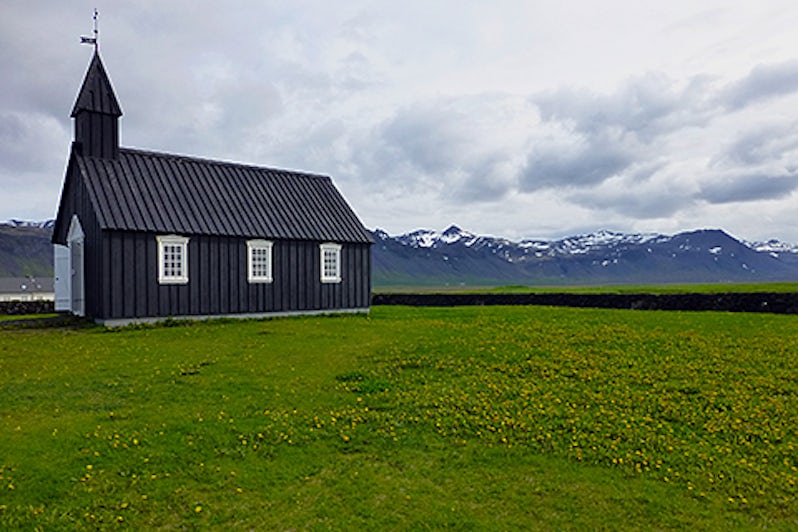
Our guide described the Snaefellsnes Peninsula as "Iceland in a nutshell." Looking for those iconic horses with flowing manes? You'll see them here. Glaciers and volcanoes? You got it. Waterfalls tumbling down the hillside? Picturesque fishing villages? Check and check. If you don't have much time to spend exploring Iceland, a trip around this scenic peninsula is the next best thing.
Highlight: Budir's simple wooden church -- one of Iceland's oldest -- sits alone in a grassy field against a backdrop of brooding, snow-tipped mountains. After touring the small sanctuary, you can walk beyond the church to reach a windswept beach.
Crossing the Denmark Strait
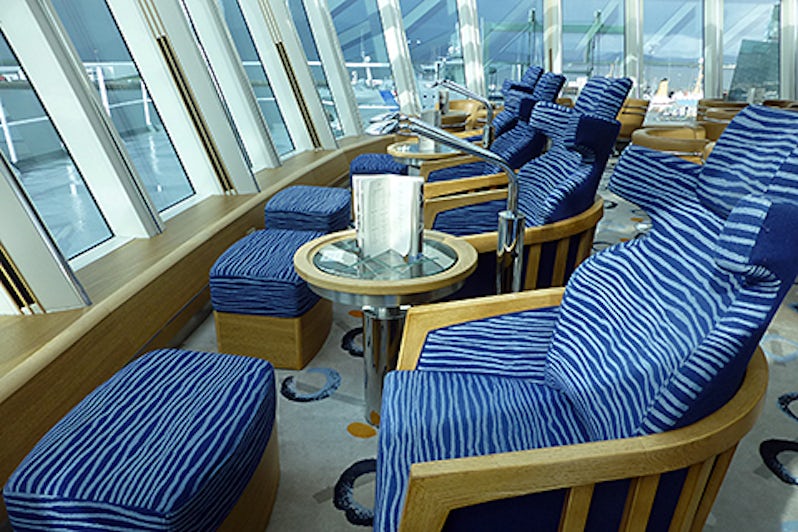
It takes two days to sail from Iceland to the western coast of Greenland, where we hoped to make our first landing at Uunartoq. Unfortunately, it was too early in the season (in early June!) for our ship to pass through Prince Christian Sound, a scenic passage that cuts across Greenland; the entrance was blocked by ice. Instead, we sailed around Cape Farewell at the country's southern tip. Note: Our crossing of the Denmark Strait between Iceland and Greenland was incredibly serene, which staff told us is rarely the case. Bring your remedy of choice if you're prone to seasickness.
Highlight: During our two days at sea, members of the expedition crew gave talks on volcanoes, ice and Viking history, and a musician strummed a guitar in the lounge. There was even a crew fashion show showcasing merino sweaters and all-weather jackets for sale in the onboard shop (a little tacky, but the crew's good humor made it fun). Though these events were well attended, many passengers took the sea days as a chance to relax. The most popular spots were the cushy chairs at the front of the observation lounge, which were always occupied by passengers with their stockinged feet propped up on ottomans, eyes intent on a novel or gazing out to sea.
The Best-Laid Plans...

On Day 5, we were scheduled to make our first three stops in Greenland: Uunartoq, where we could soak in a hot spring; Qaqortoq, where one of the four excursions offered by the ship was a chance to enjoy coffee and cake in a local's home; and Hvalsey, the site of Greenland's best Norse ruins. Unfortunately, we were thwarted again by too much ice in our path, and ended up with a third straight day at sea. As one staff member told us, being on an expedition cruise, particularly in the Arctic, means nature is in charge, and you always need a Plan B ... and C ... and even D.
Highlight: The day's agenda morphed into a now-familiar slate of informative talks and live music, but there was one nice afternoon surprise: a chef making sveler on a griddle in the lounge. These sweet, fluffy Norwegian pancakes are traditionally enjoyed with sugar and butter, but they were equally delicious with lingonberry jam.
Qaqortoq
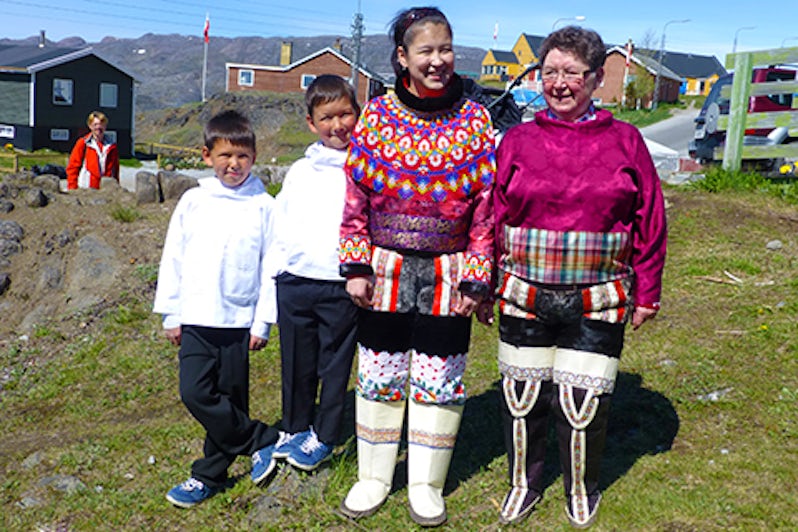
After the previous day's pea-soup fog, it was a brilliant surprise to wake up to sunshine as we docked in Qaqortoq, southern Greenland's largest city (population: 3,200). The brightly colored houses and pretty harbor make it a fun town to wander; many passengers bought handicrafts from vendors outside the visitor center.
Highlight: Today was confirmation day at the town's main church, and we saw dozens of local children wearing traditional national costumes to celebrate. Boys wore simple dark trousers and white anoraks, while the girls' more elaborate costumes involved pants and boots made of seal skin and fur, a delicately embroidered top and a multicolored shawl made of small beads. The materials for the girls' outfits can be expensive and difficult to find; one local told us that parents typically start trying to put everything together about two years in advance.
Qassiarsuk
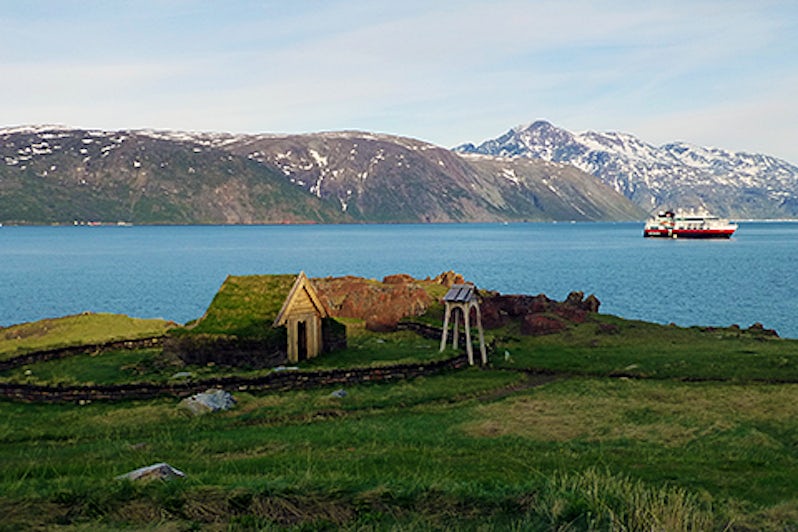
When the infamous Viking Erik the Red came to Greenland in the late 10th century, he founded a settlement called Brattahlid in the green hills overlooking Tunulliarfik Fjord. Just 50 people currently live in what's now known as Qassiarsuk (they're outnumbered by their sheep!), but visitors can still see the remains of Erik's settlement and step inside a turf-roof longhouse designed just as it would have been in his time. Nearby is a reconstruction of the tiny church Erik reluctantly had built after his wife and son (the explorer Leif Eriksson) convinced him to convert to Christianity.
Highlight: Led by a member of Hurtigruten's expedition staff, about a dozen passengers embarked on a "two-fjord hike," following a gravel road up into the hills above the settlement, past grazing sheep and round pools left by patches of melting snow. After about an hour of climbing, we reached a spectacular view of Tasermiut Fjord, glittering with ice from a nearby glacier. At our guide's encouragement we sat in complete silence for three minutes, listening to the breeze rushing in our ears and birds singing in the distance -- a little taste of Greenland's magic.
Another Missed Call
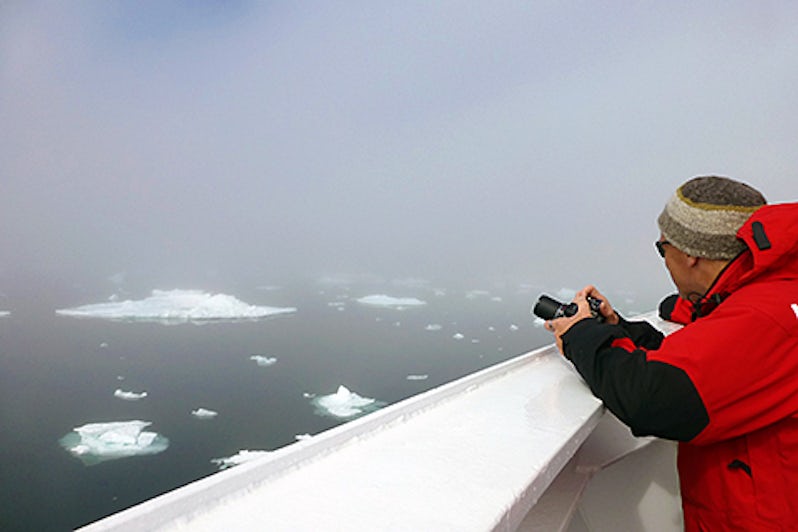
The dreaded combination of ice and fog led to another unplanned day at sea. The scheduled port, Narsaq, was the fourth call we missed on our cruise. Hurtigruten offers four excursions here, including a walk to a sheep farm, a kayaking trip, a town walk and a hike in the hills -- but they'll have to wait for another trip.
Highlight: Hurtigruten filled the morning hours with a few interesting lectures. One that got people buzzing was about the adaptations that allow certain animals to thrive in polar conditions that would quickly kill a human being. The lecturer, Andy, plunged his face into a tub of icy water while a passenger monitored his heart rate -- which dropped swiftly and dramatically. It was an eye-opening demonstration of our bodies' reflexive responses.
Nuuk
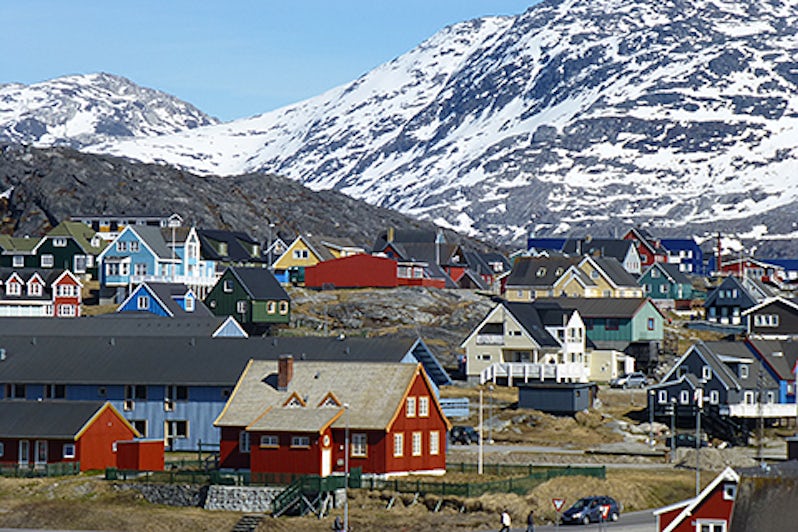
With some 16,000 residents, Nuuk is as close as Greenland gets to a big city. The capital is home to the country's only university as well as the National Museum, a multi-building collection of historical artifacts and art. Visitors can pore over everything from Inuit kayaks to tools from Norse farms, but the most famous items in the museum are well-preserved Inuit mummies dating back some 500 years.
Highlight: Overlooking the National Museum and the colonial harbor is a statue of the city's founder, Hans Egede, a Norwegian/Danish missionary who attempted (with only mixed success) to bring Christianity to this part of Greenland in the early 18th century. This hilltop perch is a perfect spot to enjoy 360-degree views of the harbor, the city and the mountains beyond.
Sisimiut
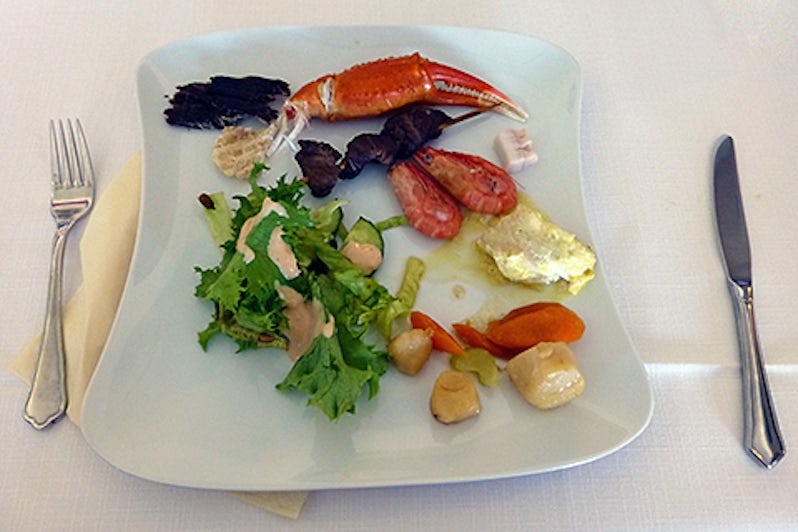
Fram crossed the Arctic Circle while sailing north from Nuuk to Sisimiut. To celebrate, we had a guest appearance onboard by the god of the sea, Neptune (a member of the expedition staff wielding a trident and wearing a gray wig), who "baptized" passengers for good luck with a ladle of ice cubes and frigid water down the back of their necks! Fortunately, warm towels and mini-glasses of Schnapps were close to hand.
Highlight: In Sisimiut, I joined the "Taste of Greenland" excursion, a buffet of local specialties. A couple tasted like beef (reindeer, musk ox), others were positively delicious (fish soup, crowberry pie) and a few I'd be happy never to eat again (the dried cod was tough and salty, while the whale blubber was so chewy it was just about inedible).
Ilulissat
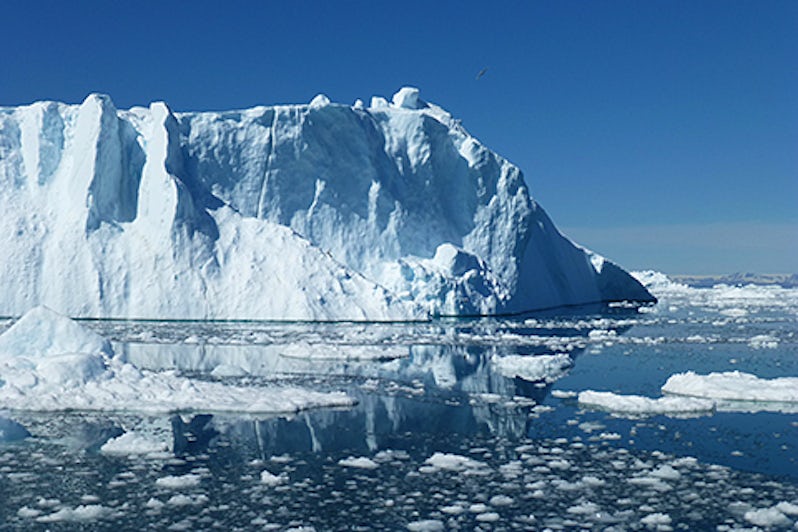
If you want to truly feel like you're above the Arctic Circle, come to Ilulissat, which means "icebergs" in Greenlandic. Here you can spot sled dogs relaxing on the side of the road and hike along a fjord choked with snow and ice from Sermeq Kujalleq, one of the world's most productive glaciers.
Highlight: The best way to enjoy the ice for which Ilulissat is famous is to take a boat right out into it. We drifted along for two hours in a serene frozen world of blue and white, among icebergs so large that one even produced a waterfall as it began to melt. Our guide explained the difference between white ice -- made of compacted snow with tiny air pockets in it -- and the denser blue or transparent ice, which is simply frozen water.
Itelleq
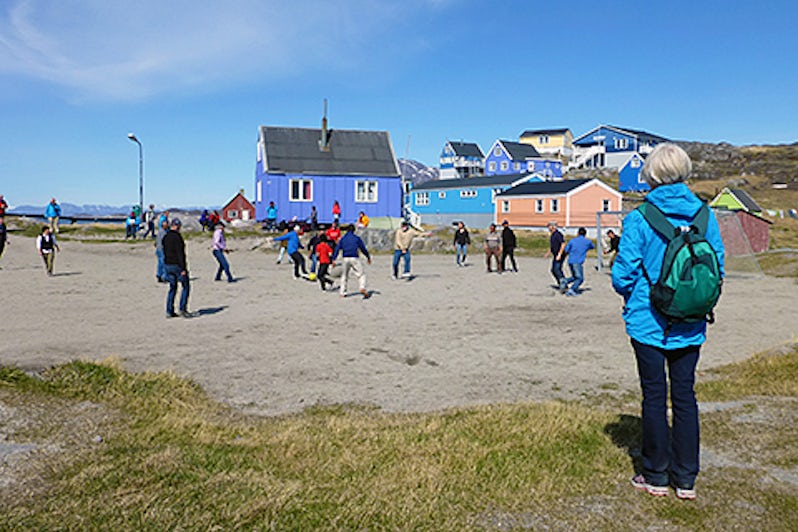
Our final port was the tiny settlement of Itelleq, with just 120 people -- and it felt like we met most of them! This seemed to be the stop where Hurtigruten most encouraged local interaction; all passengers were given the chance to enter one of several homes for a kaffemik, a brief visit for coffee and cake. The woman who invited me in spoke very limited English, but the warm smile she gave me when I attempted to say "thank you" in Greenlandic spoke eloquently enough.
Highlight: A ragtag team of Fram passengers and crew faced off against the locals in a pick-up soccer game, cheered on by advocates on both sides. After a hard-fought but friendly match (which ended in a 5 - 5 tie), we all gathered for handshakes, laughter and singing. Then the locals followed us down to the landing site, where they waved goodbye and we bid our own farewells to our Greenlandic adventure.